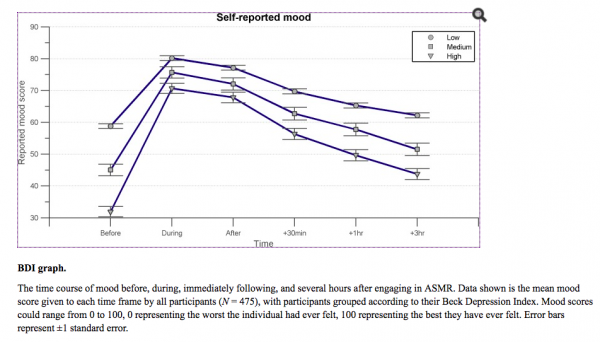If you use Instagram, you may have seen various posts of people eating food close to a microphone, in an attempt to ‘find your tingles’, or help you sleep better. ASMR, or Autonomous Sensory Meridian Response was a previously unstudied phenomenon, in which individuals claimed to feel tingling like sensations in the back of the head, scalp and down the back. Ultimately, people were using it to meditate and relax, so it’s no wonder that many people using ASMR as a tool saw improvement in cases of depression, insomnia and some chronic pains.
Sign Us Up.
I was introduced to ASMR via a friend on Instagram, who sent me a video of the Pickle Lady. If you’re not familiar, Spirit Payton has taken over the internet, eating pickles, other food items, and whispering into her microphone to help her fans relax. And it seems to be working. Payton has over 100,000 followers including celebrities such as singer Cardi B and Real Housewives of Atlanta star Porsche.
We decided to take it on, and start listening for ourselves. In a one week test, I took on ten minutes twice a day to listen to various ASMR recordings. I took two times of the day that felt needed the most wind down time. When we get home from the office around 6pm, and at bedtime, say around 11pm. Some of the studies also showed that visual ASMR helped just as much as audio stimuli, and so I tried both. The audio at bedtime, and the visual (i..e watching Payton eat a pickle) at 6pm.
Studies.
A one month study conducted of 500 adults (50/50 split gender) with an average age of 25 years old, was conducted by the University of Swansea and an online questionnaire was created for the participants to fill in (www.qualtrics.com, Version 36,892) They were asked a series of questions from:
- Do you suffer with Depression? On the BDI scale ranging from low, medium or high.
- Do you have stress in your life?
- Do you have any chronic pain?
- What Triggers did you feel when listening to ASMR, i.e. tingling in the head, neck, back etc?
- On a scale from 1-100, how did you feel (100 being the best) after listening or watching ASMR videos.
The results are interesting.
80% of people reported an increase in their mood, with 75% preferring whispering type sounds as their preferred audio. 80% of participants found that bedtime listening was the best time to do it. The following results were even more enticing.
The audience that could benefit most from ASMR seems to be those battling severe depression. For the participants that registered they suffered with moderate or severe depression, their rate of mood increase while listening to ASMR was rapid was better than anyone else in the study.
those battling severe depression. For the participants that registered they suffered with moderate or severe depression, their rate of mood increase while listening to ASMR was rapid was better than anyone else in the study.
What I Found.
My results speak for themselves, from a personal perspective, ASMR is now going to make it into my daily routine. I created a playlist on Spotify called Sleep, that you can download here.
For me, and like so many others in the study, whispering was something that I related to most. Having someone talk to me in a soft tone before bed is what relaxed me most. Whether this is hugely surprising is another thing, after all, my mother read to me at bedtime too, and it’s what helped me fall asleep. Surely there’s some connection here?
Tapping was my second trigger. One of the tracks I saved is a man tapping on a pineapple. As crazy as it sounds, it literally had me in a state of euphoria. I’d say during the 1 minute of the track, I was definitely in the 80% range of 1-100. The Pickly Lady (Spirit Payton) also taps on various objects, from donuts to pickles.
After three days I started waking up with less anxiety. Now, I should note that I don’t really wake up with much anxiety in general, but I usually would wake up in a more hurried manner, deciphering in my head what I have to do that day. After 3 days of ASMR, I started waking up in a more calm manner and being more excited to jump into the day. I also felt less stressed throughout. This may also be because I was technically getting more sleep.
Needless to say, after the first week, my mood is increased. I’m a fully fledged fan of ASMR and a believer. For me, it harks to meditating and isn’t really any different. It’s a way of inducing you into a mindful state that forces you to retreat and relax. You don’t tend to think about anything else other than the sounds (maybe thats why some prefer the visual aspect)
Join me on Spotify by clicking here.
Reference links:
https://www.ncbi.nlm.nih.gov/pmc/articles/PMC4380153/

















